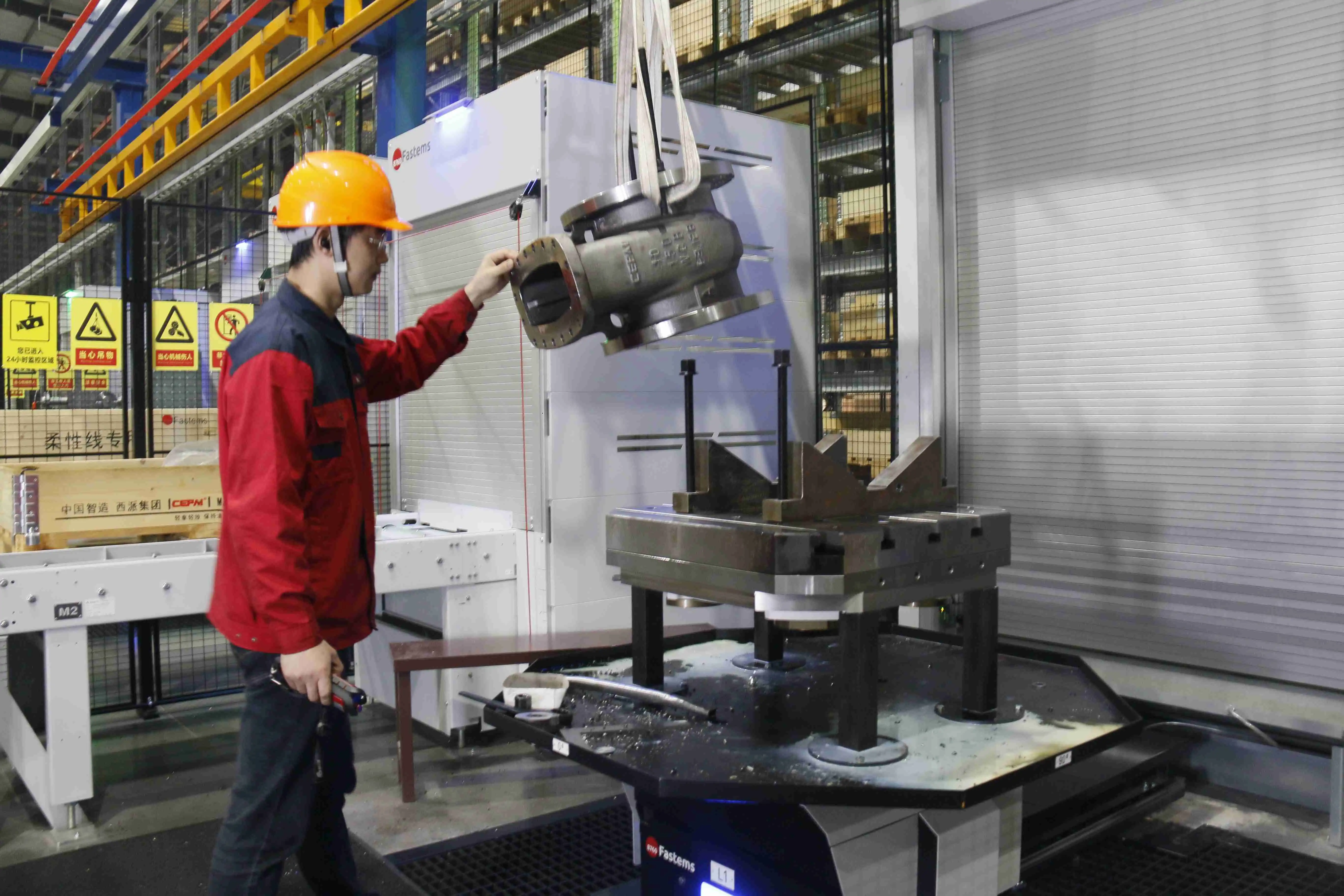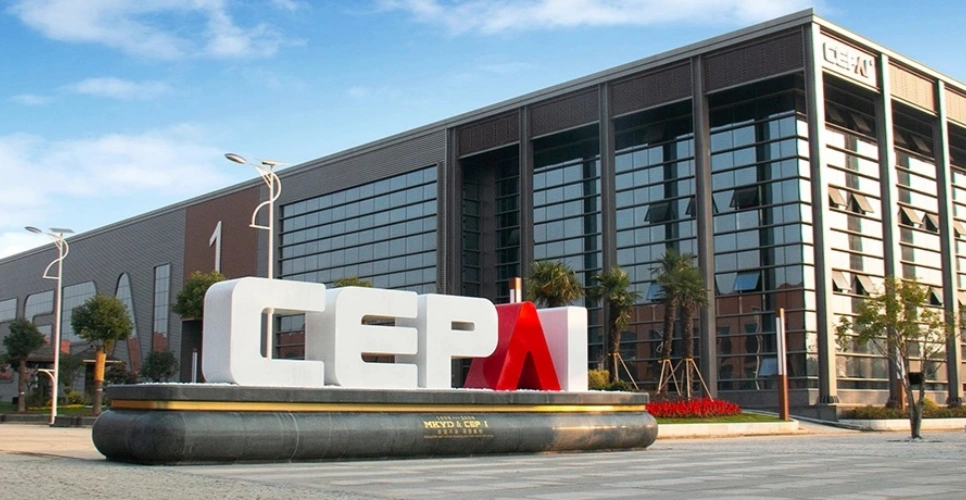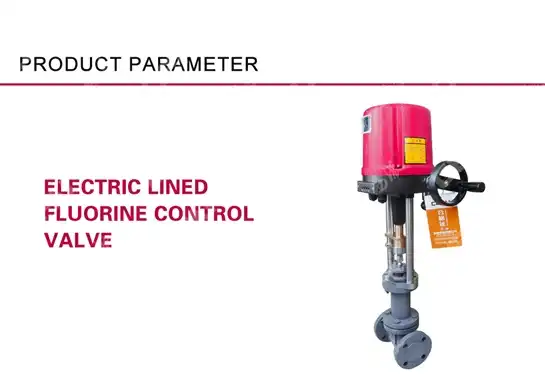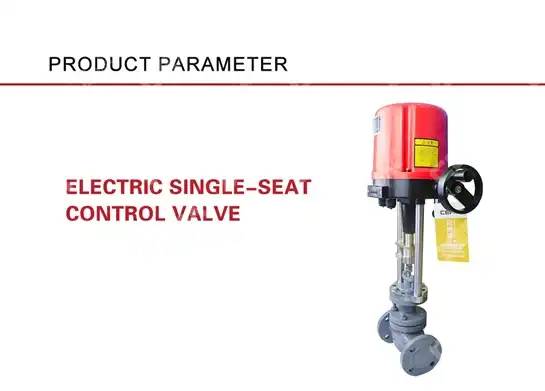Optimizing Your Pneumatic Single Seat Valve for Better Performance
Industrial facilities worldwide face a critical challenge: maintaining optimal flow control while minimizing operational downtime and maximizing efficiency. When your Pneumatic Single Seat Valve underperforms, it doesn't just affect one process—it creates a cascading effect that impacts entire production lines, increases maintenance costs, and compromises product quality. This comprehensive guide addresses the most pressing concerns engineers and maintenance professionals encounter when optimizing valve performance, providing actionable solutions that transform problematic valve operations into reliable, high-performing control systems that deliver consistent results across demanding industrial applications.
Understanding Pneumatic Single Seat Valve Fundamentals
-
Core Design Principles and Operating Mechanics
The Pneumatic Single Seat Valve represents a sophisticated piece of engineering that combines precision mechanics with reliable pneumatic actuation to deliver exceptional flow control capabilities. At its core, this control valve utilizes compressed air as the primary power source, channeling this energy through a pneumatic actuator that positions the valve disc with remarkable accuracy. The single-seat design distinguishes itself through its streamlined flow path, where fluid passes through one primary seat opening, creating minimal pressure drop while maintaining precise control over flow rates and pressure regulation. The fundamental operating principle revolves around the pneumatic actuator's ability to translate air pressure variations into linear motion. When control signals adjust the air pressure within the actuator chamber, the diaphragm or piston responds by moving the valve stem, which directly controls the position of the valve disc relative to the seat. This direct relationship between input signal and valve position enables rapid response times and precise control accuracy that makes the Pneumatic Single Seat Valve indispensable in applications requiring tight process control. Understanding these mechanics proves essential for optimization efforts because every component—from the actuator diaphragm to the valve trim—plays a crucial role in overall performance. The valve body's globe design provides excellent flow characteristics while facilitating maintenance access, while the single-seat configuration ensures consistent shutoff capabilities and reduces the complexity associated with multi-seat alternatives.

-
Critical Performance Parameters and Specifications
Optimizing Pneumatic Single Seat Valve performance requires deep understanding of key specifications that directly impact operational effectiveness. Flow coefficient (Cv) represents perhaps the most critical parameter, determining the valve's capacity to handle specific flow rates under defined pressure conditions. The Cv value directly correlates with valve sizing requirements, and selecting the appropriate coefficient ensures optimal performance without oversizing or undersizing issues that compromise control accuracy. Response time specifications define how quickly the Pneumatic Single Seat Valve reacts to control signal changes, typically measured in seconds from signal input to 95% of final position. This parameter becomes particularly crucial in applications requiring rapid process adjustments or safety shutoff capabilities. Industry-standard response times range from 0.5 to 5 seconds, with faster responses generally preferred for dynamic process control applications. Rangeability, the ratio between maximum and minimum controllable flow rates, indicates the valve's operational flexibility. High-quality Pneumatic Single Seat Valves typically achieve rangeability ratios of 50:1 or higher, enabling precise control across wide operating ranges. This specification directly impacts process stability and control accuracy, particularly in applications with varying load conditions or seasonal demand fluctuations that require adaptable flow control solutions.
Advanced Optimization Strategies for Enhanced Performance
-
Precision Actuator Calibration and Tuning Methods
Achieving optimal Pneumatic Single Seat Valve performance demands meticulous attention to actuator calibration procedures that align pneumatic response characteristics with process control requirements. The calibration process begins with establishing accurate baseline measurements, including supply pressure consistency, actuator travel limits, and response time benchmarks. Professional calibration involves adjusting spring tension, air pressure ranges, and positioner settings to achieve linear response characteristics across the entire operating range. Modern optimization approaches incorporate advanced diagnostic tools that monitor actuator performance in real-time, identifying deviation patterns before they impact process control. Digital valve positioners enhance this capability by providing continuous feedback loops that automatically compensate for wear, temperature variations, and supply pressure fluctuations. These intelligent systems learn from operational patterns, gradually improving response accuracy while reducing maintenance requirements through predictive adjustment algorithms. The calibration process also addresses hysteresis elimination, ensuring the Pneumatic Single Seat Valve responds identically to increasing and decreasing control signals. Proper calibration reduces hysteresis to less than 0.5% of full scale, dramatically improving control loop stability and reducing process variability. This precision proves particularly valuable in critical applications where minor flow variations significantly impact product quality or safety margins.
-
Advanced Flow Optimization and Trim Selection
Flow optimization represents a sophisticated balancing act between achieving desired flow characteristics and maintaining long-term reliability under varying operating conditions. The selection of appropriate valve trim—the internal components that directly contact the process fluid—significantly influences both performance and longevity. Standard trim configurations include linear, equal percentage, and quick-opening characteristics, each optimized for specific application requirements. Linear trim provides proportional flow changes relative to stem position, making it ideal for applications requiring consistent flow increments throughout the operating range. Equal percentage trim delivers logarithmic flow characteristics, where each increment of stem movement produces a flow change proportional to the current flow rate. This configuration proves particularly effective in applications with wide load variations, as it provides fine control at low flows while accommodating high-capacity requirements at full opening. Advanced trim designs incorporate features like anti-cavitation technology, noise reduction elements, and specialized materials to address specific process challenges. Multi-stage pressure reduction trim assemblies enable the Pneumatic Single Seat Valve to handle high-pressure applications while preventing cavitation damage and reducing noise levels below acceptable limits. These sophisticated designs extend valve life significantly while maintaining consistent performance under demanding conditions.
Comprehensive Maintenance and Troubleshooting Protocols
-
Systematic Diagnostic Approaches and Performance Monitoring
Implementing comprehensive diagnostic protocols ensures your Pneumatic Single Seat Valve maintains peak performance throughout its operational lifecycle. Modern diagnostic approaches combine traditional mechanical inspections with advanced monitoring technologies that provide continuous insight into valve health and performance trends. Vibration analysis, thermal imaging, and acoustic monitoring reveal developing issues before they cause process disruptions or safety concerns. Performance monitoring systems track key indicators including response time variations, positioning accuracy, and supply pressure stability. These systems establish baseline performance metrics during commissioning, then continuously compare operational data against these benchmarks to identify performance degradation. Trending analysis reveals gradual changes that indicate component wear, calibration drift, or process condition changes that require attention. Advanced diagnostic techniques include partial stroke testing for safety-critical applications, where the Pneumatic Single Seat Valve partially travels without disrupting normal operation. This testing validates actuator functionality and identifies potential issues with stem binding, actuator response, or positioner calibration. Regular partial stroke testing, combined with comprehensive performance monitoring, provides early warning of developing problems while maintaining operational continuity.
-
Predictive Maintenance Strategies and Component Optimization
Predictive maintenance transforms traditional time-based maintenance schedules into condition-based programs that optimize maintenance timing while minimizing operational disruptions. For Pneumatic Single Seat Valves, this approach focuses on monitoring component-specific wear patterns and performance degradation indicators that predict maintenance requirements with remarkable accuracy. Critical components requiring focused attention include actuator diaphragms, valve seats, stem packing, and positioner mechanisms. Each component exhibits characteristic failure patterns that can be monitored and predicted. Diaphragm degradation typically manifests as reduced response speed and positioning accuracy, while valve seat wear appears as increased leakage rates and reduced shutoff capability. Systematic monitoring of these parameters enables maintenance planning that prevents unexpected failures while extending component life through optimal replacement timing. Digital asset management systems enhance predictive maintenance by maintaining comprehensive component histories, including installation dates, maintenance actions, performance trends, and replacement schedules. These systems correlate performance data with maintenance activities, identifying patterns that optimize future maintenance decisions. The integration of artificial intelligence algorithms further enhances prediction accuracy by analyzing complex relationships between multiple performance indicators and operational conditions.
Integration and System Optimization Considerations
-
Control System Integration and Communication Protocols
Modern Pneumatic Single Seat Valve optimization extends beyond mechanical considerations to encompass sophisticated integration with advanced control systems and communication networks. Digital communication protocols enable real-time data exchange between valves and control systems, providing unprecedented visibility into valve performance while enabling advanced control strategies that were previously impossible with analog systems. HART (Highway Addressable Remote Transducer) communication represents the most widely adopted digital communication standard for Pneumatic Single Seat Valve applications. HART-enabled positioners provide bidirectional communication that supports remote configuration, diagnostics, and calibration while maintaining compatibility with existing 4-20mA control loops. This dual communication capability enables gradual migration to digital control strategies without requiring complete system replacement. Advanced control algorithms leverage digital communication capabilities to implement sophisticated control strategies including cascade control, feedforward compensation, and model predictive control. These strategies optimize process performance by anticipating disturbances and adjusting valve positions proactively rather than reactively. The result is improved process stability, reduced variability, and enhanced overall system efficiency that directly translates to improved product quality and reduced operational costs.

-
Environmental Adaptation and Performance Enhancement
Environmental conditions significantly impact Pneumatic Single Seat Valve performance, requiring careful consideration of temperature variations, humidity levels, corrosive atmospheres, and vibration exposure. Optimization strategies must address these environmental factors through appropriate material selection, protective measures, and specialized design features that maintain consistent performance under challenging conditions. Temperature compensation represents a critical optimization consideration, particularly for applications experiencing wide temperature ranges. Thermal effects influence actuator response characteristics, seat leakage rates, and dimensional stability of critical components. Advanced valve designs incorporate temperature compensation features including bimetallic elements, thermal barriers, and specialized materials that maintain consistent performance across extended temperature ranges. Corrosion protection strategies encompass material selection, protective coatings, and design features that isolate critical components from aggressive environments. Stainless steel construction, specialized alloys, and fluoropolymer coatings provide excellent corrosion resistance while maintaining mechanical integrity. Environmental sealing systems protect internal components from moisture, dust, and chemical vapors that could compromise performance or accelerate component degradation.
Conclusion
Optimizing your Pneumatic Single Seat Valve performance requires a comprehensive approach that addresses mechanical design, calibration precision, maintenance strategies, and system integration considerations. Success depends on understanding fundamental operating principles while implementing advanced diagnostic and optimization techniques that maximize reliability and performance. Through systematic application of these optimization strategies, industrial facilities achieve improved process control, reduced maintenance costs, and enhanced operational efficiency that directly contributes to competitive advantage and profitability.
Cooperate with CEPAI Group Co., LTD.
CEPAI Group Co., LTD. stands as a premier China Pneumatic Single Seat Valve manufacturer and China Pneumatic Single Seat Valve supplier, delivering exceptional quality and performance through advanced manufacturing capabilities and rigorous quality control systems. Established in 2009 with 200 million yuan registered capital, our company operates from a state-of-the-art 56,000 square meter facility in Jiangsu Province, combining cutting-edge technology with proven engineering expertise to produce industry-leading valve solutions.
Our comprehensive product portfolio positions us as your preferred China Pneumatic Single Seat Valve factory, offering extensive customization capabilities and OEM support that addresses specific application requirements. With Model 5610 Pneumatic Single Seat Valves designed for gas, water, and oil applications, we provide High Quality Pneumatic Single Seat Valve solutions that excel in normal temperature environments while maintaining exceptional reliability and performance standards.
As a nationally recognized high-tech enterprise and specialized "little giant" company, CEPAI maintains multiple research centers and innovation platforms that drive continuous product development and technological advancement. Our certifications include API Q1, API 6A, API 6D, ISO 9001, ISO 14001, and CE marking, ensuring compliance with international standards while delivering competitive Pneumatic Single Seat Valve price structures that provide exceptional value for our global customer base.
We invite you to explore our China Pneumatic Single Seat Valve wholesale opportunities and discover how our Pneumatic Single Seat Valve for sale offerings can optimize your operations. Contact our technical experts at cepai@cepai.com to discuss your specific requirements and experience the CEPAI difference in quality, service, and performance.
FAQ
Q: What factors affect Pneumatic Single Seat Valve response time?
A: Response time depends on actuator size, supply pressure, positioner type, and valve travel distance. Larger actuators and higher supply pressures generally provide faster response times.
Q: How do I determine the correct Cv value for my application?
A: Calculate Cv using flow rate, pressure drop, and fluid properties. Consider maximum flow requirements with appropriate safety margins for optimal performance.
Q: What maintenance schedule should I follow for optimal performance?
A: Implement quarterly performance checks, annual calibration verification, and condition-based maintenance using diagnostic data to optimize maintenance timing.
Q: How can I reduce cavitation in my Pneumatic Single Seat Valve?
A: Use multi-stage trim designs, optimize upstream piping, maintain adequate downstream pressure, and consider anti-cavitation trim configurations for high-pressure applications.
References
1. Industrial Valve Technology and Applications, Smith, J.R., et al., Published by Mechanical Engineering Press, 2023
2. Pneumatic Control Systems: Design and Optimization, Anderson, M.K., Published by Control Engineering Publications, 2022
3. Flow Control Valve Performance Standards, International Society of Automation, Technical Committee SP75, 2023
4. Advanced Valve Diagnostic Techniques, Thompson, L.W. and Garcia, R.M., Published by Process Control Institute, 2022
_1745994790767.webp)
Get professional pre-sales technical consultation and valve selection services, customized solution services.

About CEPAI


